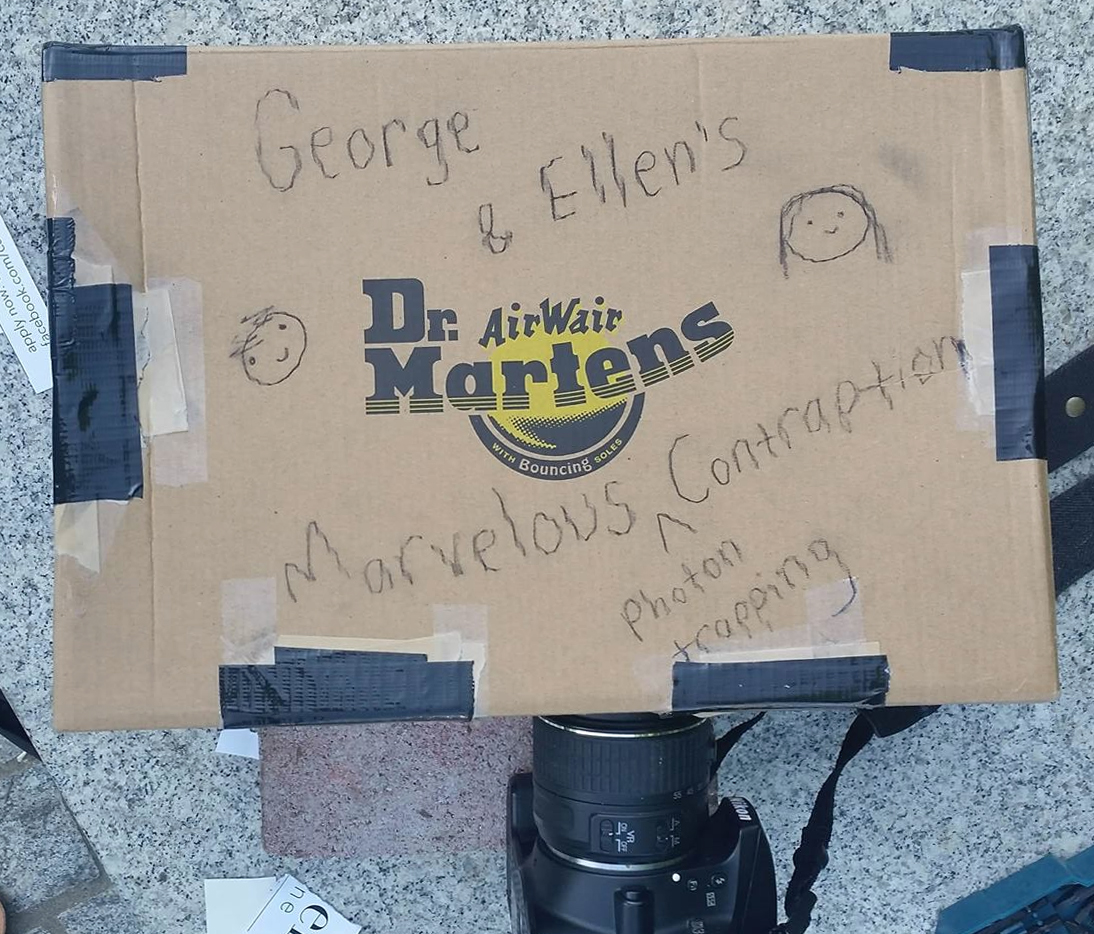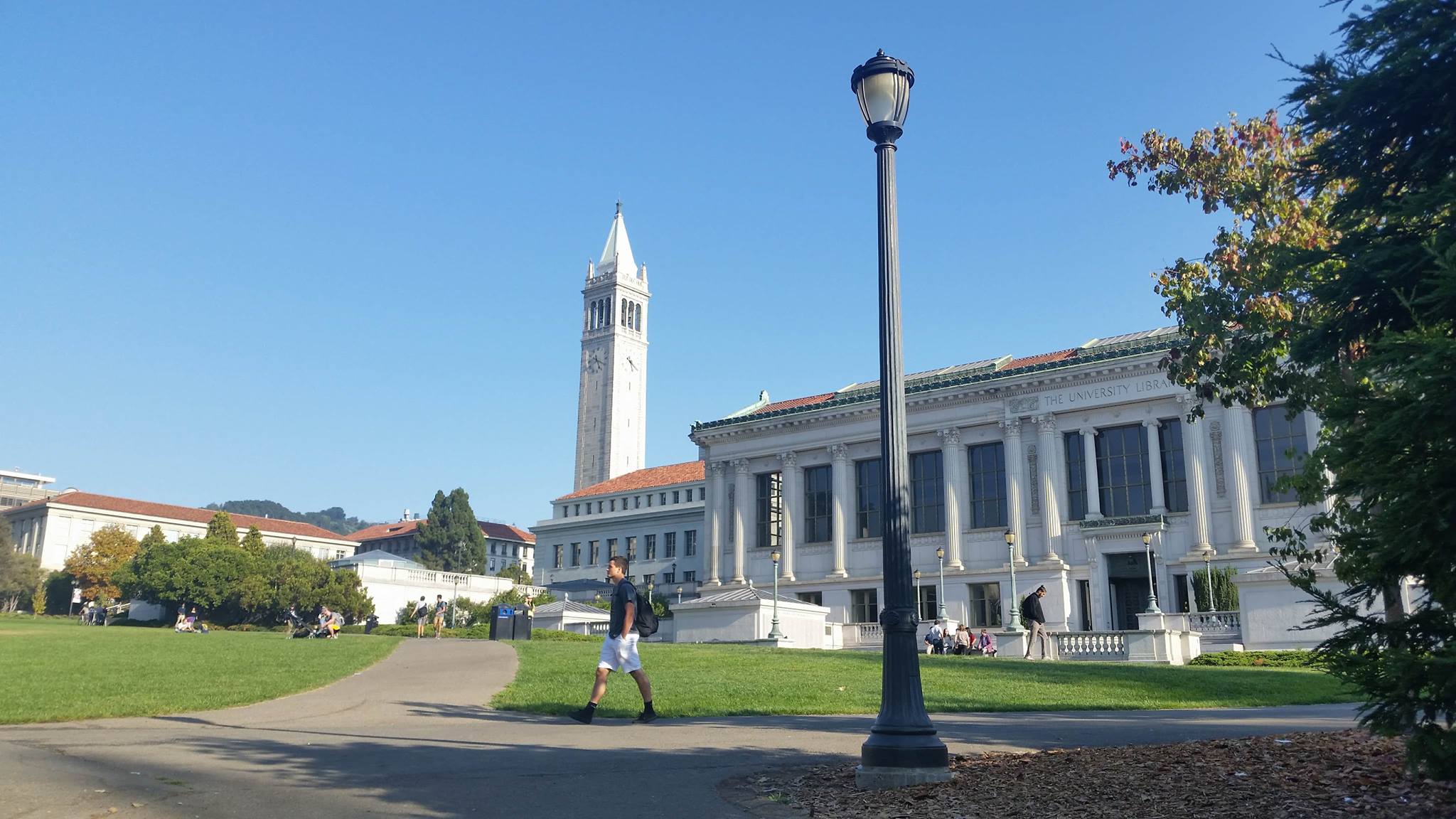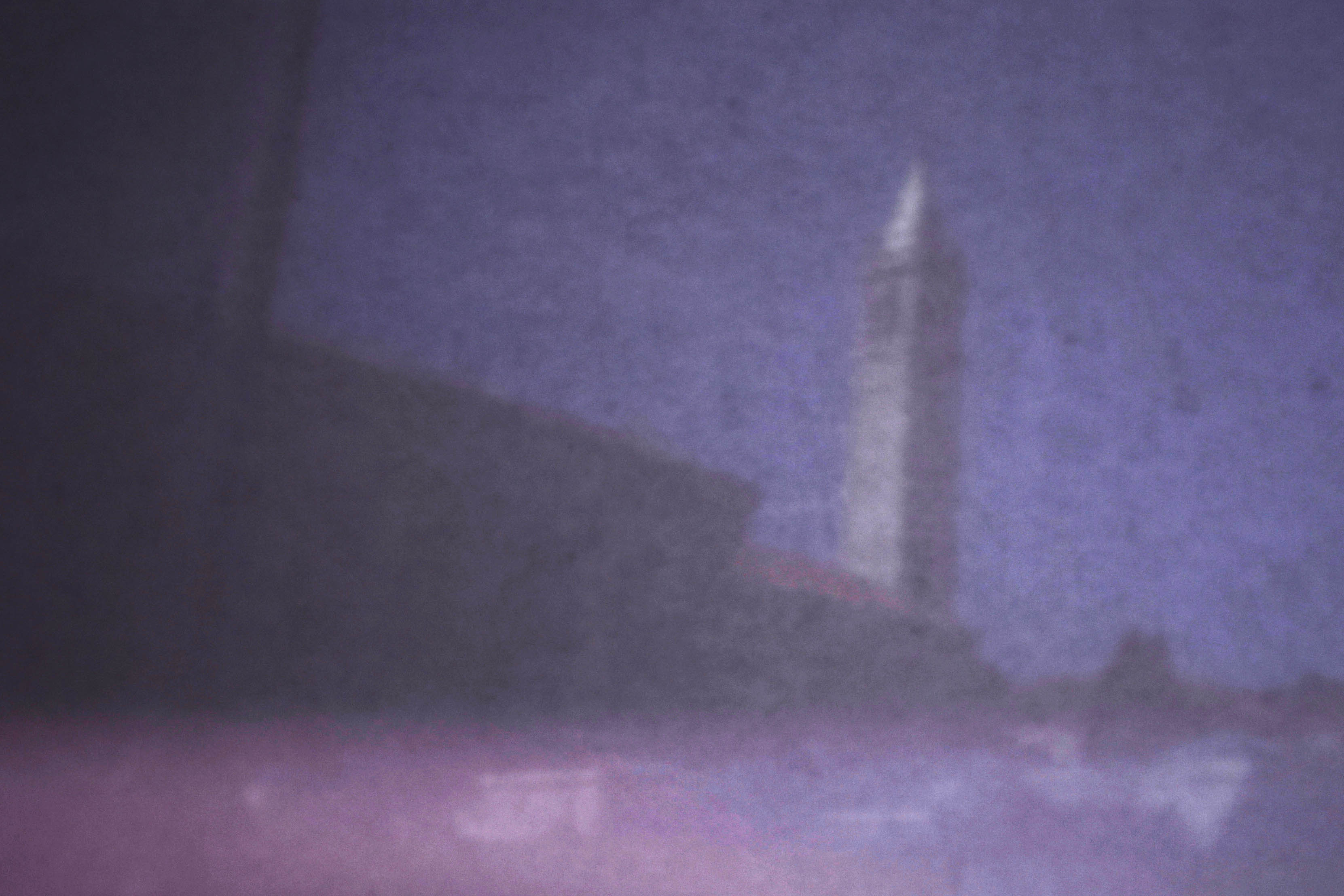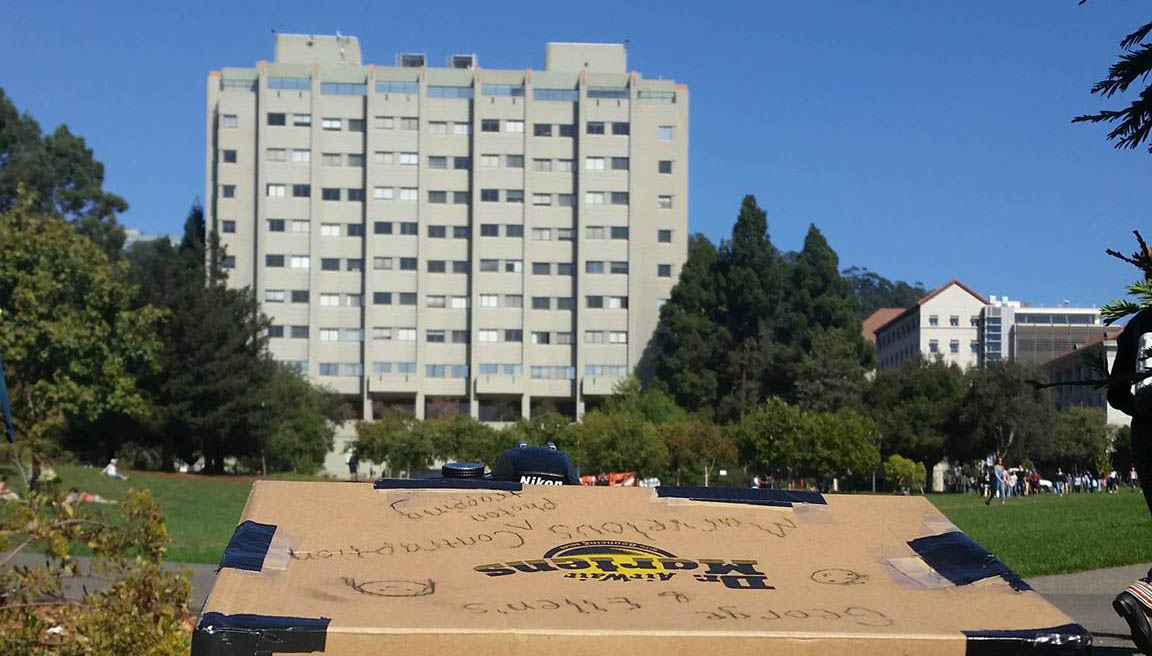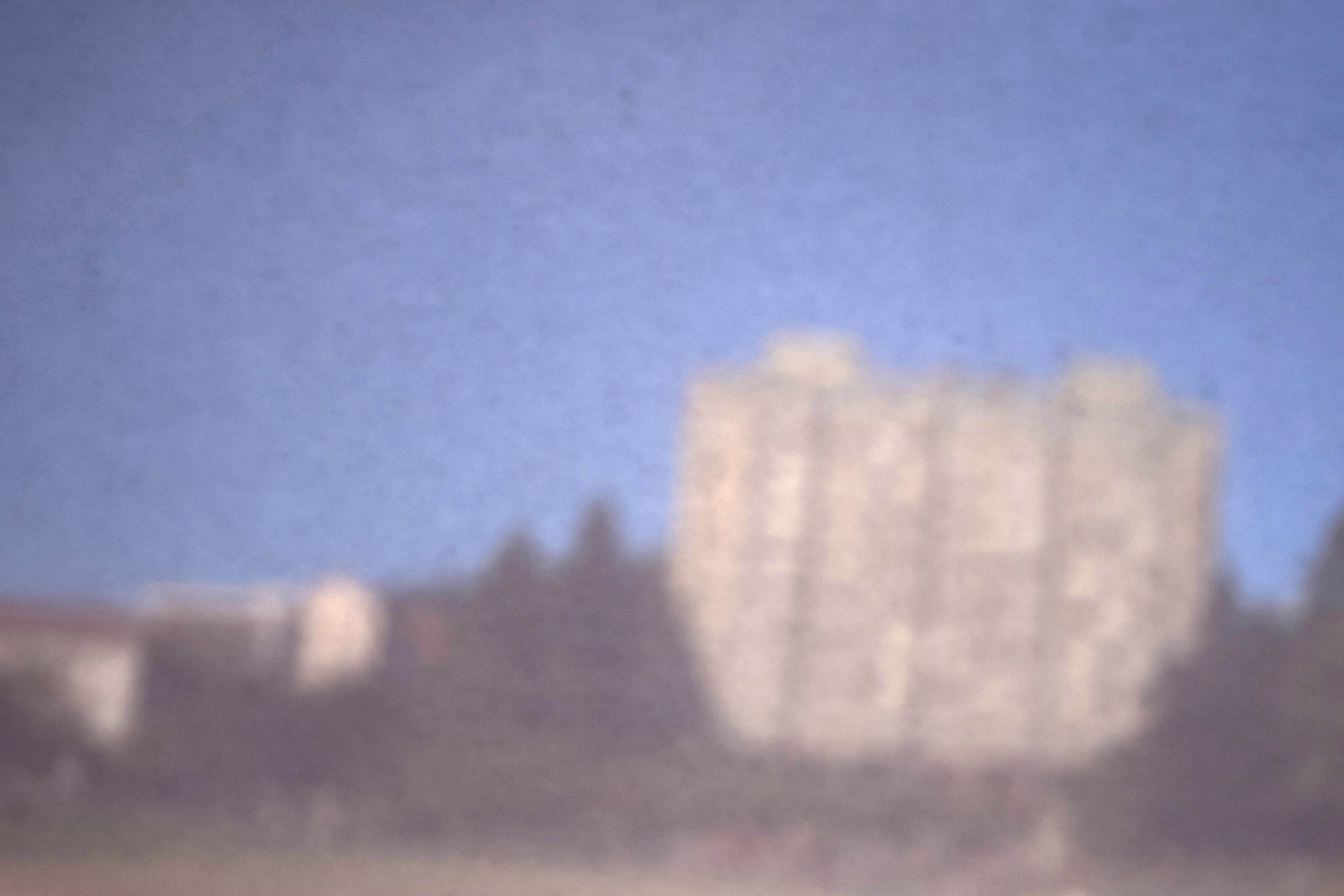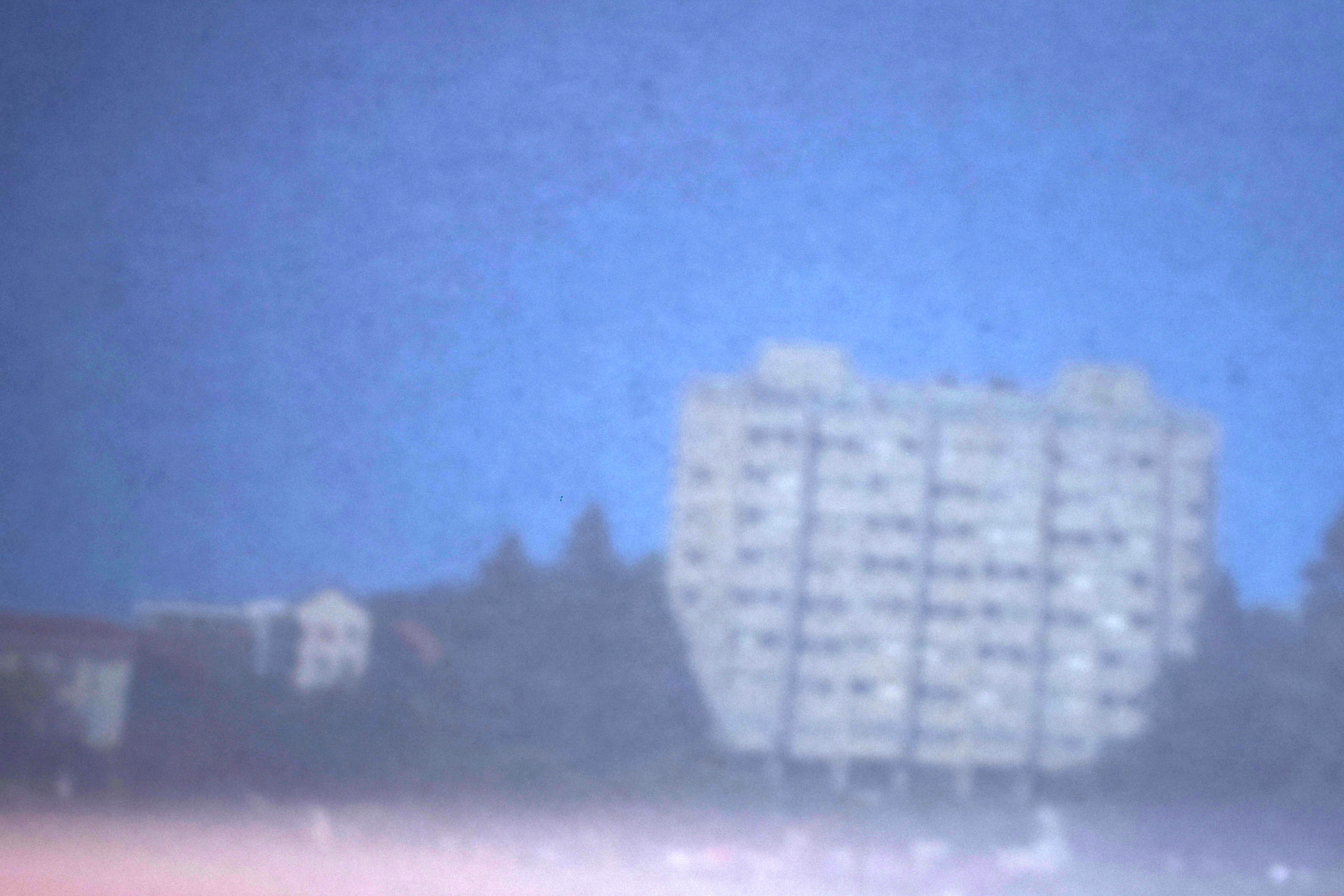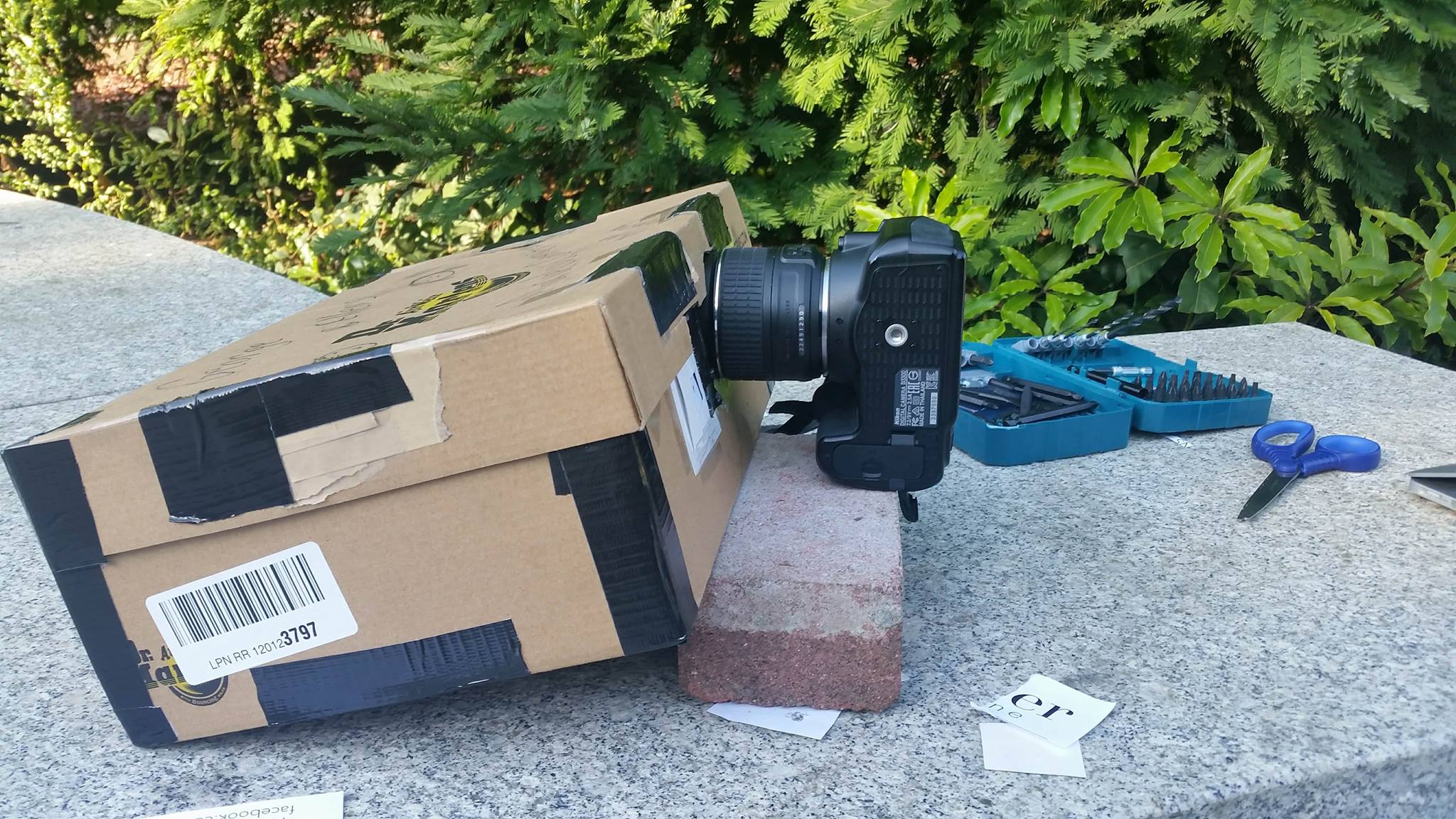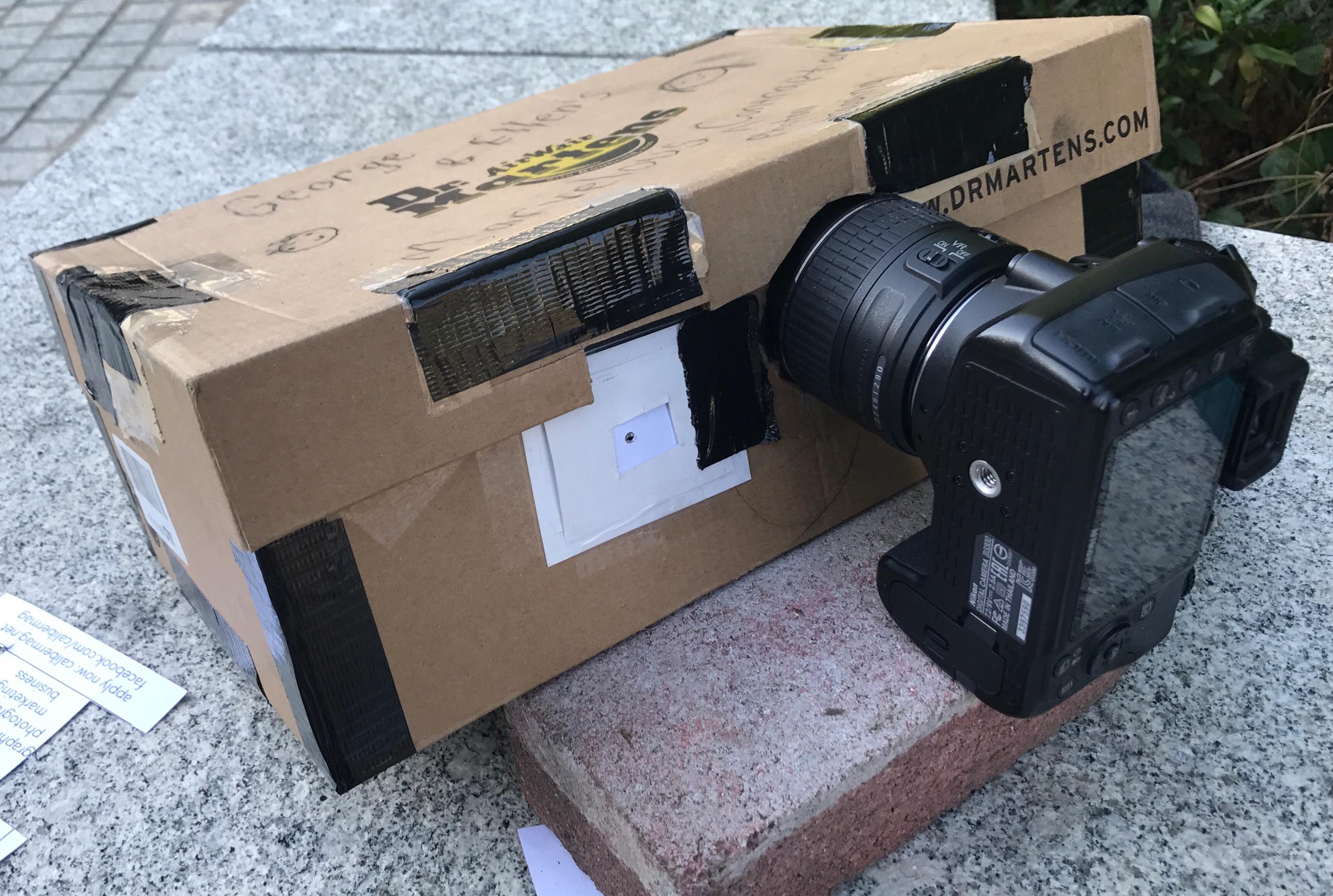We notice, from the progression of pinhole sizes, that the smallest pinhole (0.1mm) produced visibly sharper images, while the larger pinholes gave us blurrier results. This can be explained by the fact that with a larger aperture size, there is a great number of light rays entering the hole. These rays are more likely to scatter/diverge on the other side of the lens, creating a circle of confusion through which the image is not in focus. On the other hand, having a smaller aperture allows fewer light rays to enter the hole, while increasing the chance that those rays will converge to a single focus point.
We also recognize that the smaller the pinhole, the longer the exposure time needs to be to capture as much light as would be captured for a larger hole. Thus, for our smallest pinhole size of 0.1mm we found the optimal exposure time to be around 45 seconds, while for the 2 larger sizes we used an exposure time of 30 seconds.
